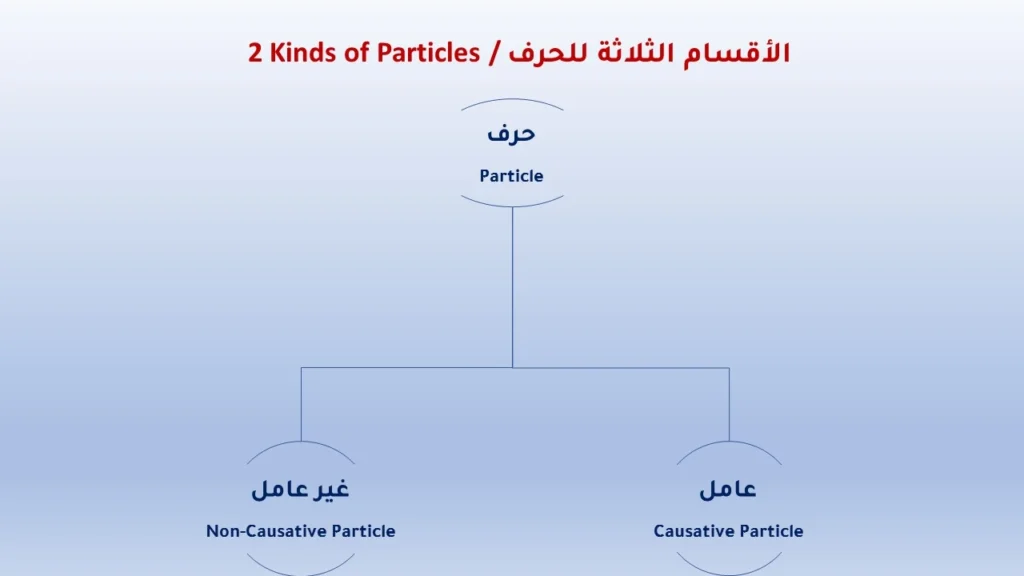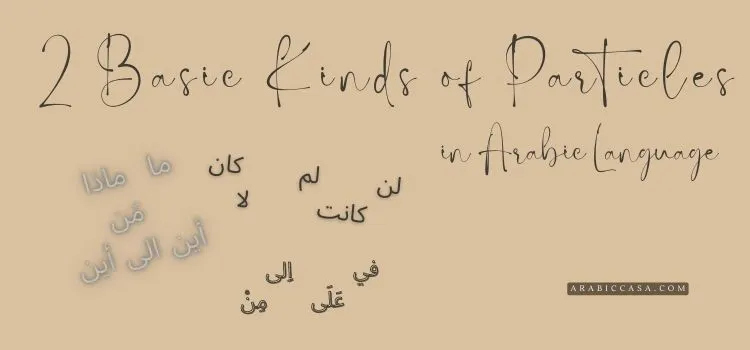2 Basic Kinds of Particles in Arabic Language
Are you looking to understand the 2 kinds of particles in Arabic? If yes, then you have come to the right place my friend.
Though nouns and verbs are the key components of the Arabic language, no one can deny the important role played by the particles as well. In this article, we are about to uncover what is a particle and what are the two basic kinds of particles in the Arabic language.
Before we dig into the 2 basic kinds of particles in Arabic, let’s understand first ‘What is a particle?’ In simple words, particles are those kinds of words that cannot create a true sense of them unless they are used with a noun or a verb in a phrase or a sentence.
For instance, the word مِنْ is a particle meaning ‘from’. It is not able to express a clear message. But, when the particle is attached to a noun (المسجد), it will create its sense من المسجد (from the masjid).
Basic Kinds of Particles in Arabic
There are two basic kinds of particles in Arabic:

عامِل (Causative Particle):
It is a kind of particle that brings a change of ‘إعْرِاب‘ (vocalization) in the following word.
For example, the word ‘فى‘ is a causative particle that means ‘in’. Although, we know the meaning of the word, but it is not making any sense alone. Therefore, it has to be used with a noun or a verb. Like in the following example, رَجُلٌ فِى الْمَسْجِدِ (Man is not in the house).
Now, we can understand the meaning that the particle is creating. Similarly, in this example, the particle ‘فى‘ is bringing change in the vocalization of ‘الْمَسْجِدِ‘. Before, the noun ‘الْمَسْجِدِ‘ did not have the sign of (Kasra or Zair دِ). This sign was given by the particle ‘فى‘.
Examples of Arabic Causative Particles
| Purpose | Particle | Meaning |
|---|---|---|
| Negative Future (Particle used with الفعل المضارع) | لن | will never |
| Negative Past (Particle used with الفعل المضارع) | لم | did not |
| Conditional Particle (Particle mostly used with الفعل المضارع) | اِنْ | if |
| Arabic Preposition (Particle Used with Nouns) | في | in |
| Arabic Preposition (Particle Used with Nouns) | اِلى | to / towards |
| Arabic Preposition (Particle Used with Nouns) | عَلَى | on |
| Arabic Preposition (Particle Used with Nouns) | مِنْ | from |
| Arabic Preposition (Particle Used with Nouns) | لِ | belongs to |
| Arabic Preposition (Particle Used with Nouns) | بِ | with / at / in |
| Arabic Preposition (Particle Used with Nouns) | عَنْ | to/towards |
Here is one more example. This will help in establishing a good foundation for understanding the 2 basic kinds of particles in the Arabic language.
Likewise, the particle ‘لَمْ’ is a causative particle which is used before a present verb in Arabic which changes the tense from present to past. While the particle ‘لَمْ’ brings a change in the meaning, it also changes the vocalization of the verb.
For instance, the verb يَذْهَبُ is a present tense verb meaning ‘He goes’. But when particle ‘لَمْ’ is entered, it changes the vocal sign of (Dhamma بُ) to (Jazam or Sukoon بْ) and is written and read as لَمْ يَذْهَبْ.
I believe you have understood the first kind of particle!!!
غيرعامِل (Non-Causative Particle):
It is a kind of particle which does not bring any change of ‘إعْرِاب‘ (vocalization) in the following word.
For example, the particle ‘ و ‘ is a non-causative particle that means ‘and’. It is used to join two words or sentences and is part of conjugational words in English. Let’s see why it is called a non-causative particle.
Read this example ُرَجُلٌ و الْمَسْجِد. In this example, the particle ‘ و ‘ is joining two nouns. That is the sole purpose of this particle. And it is not bringing any change in the vocalization of the following noun.

Let’s see one more example of the non-causative particle to make the 2 basic kinds of particles in Arabic more clear for you.
Likewise, the particle ‘لا‘ is a non-causative particle which is used as a negative particle to negate a positive or affirmative sentence.
For instance, يَذْهَبُ is a present tense verb meaning ‘He goes’, but, if we want to negate the action of going, we will add the particle ‘لا‘ before يَذْهَبُ. So the sentence will become لا يَذْهَبُ (He does not go). That particle لا only changed the meaning from positive to negative and did not bring any change to the vocal of the last letter of the verb يَذْهَبُ.
I hope now, you have understood the second kind of particle!!!
Watch A Video About Particles
Go check the video where I have introduced the particle with its 2 basic kinds.
Conclusion
Particles are one of the 3 important components of the Arabic language, though, particles have many major and sub-kinds, this article only discussed the 2 basic kinds of particles in Arabic to give a foundational start to people who have just started to learn Arabic. We got to know the definition of particle and its importance in understanding Arabic.
We also understood that particles are not as strong as nouns and verbs in expressing their meanings on their own. Particles need support of a noun or a verb in creating a true sense from it.
We also got to know that some particles can bring change in the vocalization of the last letter of a word and some do not; hence, giving the 2 basic kinds of particle in Arabic; causative nad non-causative particles.
I will write about particles and their kinds, in detail, in other articles. But if you want to learn more about particles, you may read this article which is describing some more common particles.
Enjoy the learning journey!!! Let’s meet in some other article!! Take care!!!

